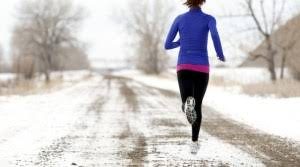
An Addict’s Confession

Get to know Sigrid and her journey to slimness and vitality

Click here for my published InShape News article.
It’s winter … cold, often wet, and maybe even snowing. Sure it can be darn right uncomfortable to get your ‘sweat up’, let alone the lack of motivation that comes with those limited hours of sunlight.
We all think that winter is the time for snuggling, getting sedentary with a good book and enjoying some hearty meals … comfort food … winter warmers. Yep, winter, according to Hollywood and popular belief, is time to hibernate, become a recluse, turn on the TV or grab a good book and bunker down until spring.
But with the joy of the first budburst signifying spring, we often also realise that those skinny jeans no longer fit … and we make a defiant resolution to lose that winter weight, go on a mad (and often crazy) diet in an often fruitless attempt to get our bikini body back for summer.
But imagine a different reality for a moment. What if, during winter, we found ways to be more active, to keep the gradual addition of those surplus pounds and kilograms at bay? What if when spring arrives there didn’t need to be a mad ‘spring clean’ of our waistline … ?
Really the secret to keeping active during the cooler months is all about finding ways to keep yourself motivated and challenged. The best way to do this is by:

Finding The Right Winter Workout
Here are some winter-weather-proof solutions you can try:
Home Fitness
There are literally dozens of ways to work out at home. If you’ve got a home bike, treadmill or some other piece of equipment – use it. If not, hire it or use a 7 Minute Workout app on your smartphone. Failing that check out Fitstyler’s simple home fitness routine that you do without equipment – click here. Yoga, Pilates and workout routines on DVD like Beach Body’s Insanity can get your core strength up and your body looking trim and toned regardless of the weather outside. If all else fails, find some indoor stairs to climb.
Alternative Outside Workouts
For the winter bunnies out there are a number of alternatives that you can switch to during the cooler months. Try these:
Find a Workout Group
If you need more motivation or a personal trainer then trawl Google for “exercise groups near me”. It’s sure to return plenty of results at lots of different venues including indoor halls and sports centres – you’ll just need to sift through the results to find one that looks like it suits you. Failing that ask your friends for any recommendations.
Adjusting Your Approach
Many people chose not to exercise in winter because they think it’s bad for you. But Rodale Wellness’s Celia Shatzman debunks that myth as well as several others. Exercising in the cold is no riskier if you follow these simple rules.
Do A Longer Warm Up
WebMD’s, Richard Cotton PhD explains getting your body warmed up actually makes is psychologically easier to get your workout started. As it’s colder outside getting your body warmed up and ready for a workout is going to take a bit longer. But giving it this time to properly warm up will ensure you prevent injury or shock in muscles, tendons, ligaments and joints.
Don’t Stop
In warmer weather you can afford to take a few breaks during your workout – the ambient temperature is higher and you cool down less quickly. But in winter it’s a very different story so keep it moving when out in the cold. And don’t forget once you’re done, move immediately into the warmth in order to stretch, so that your muscles do not become stiff.
Dress Appropriately
Check the outside temperature before you head out for your workout and make sure you layer up appropriately. Wind chill factors can have a huge influence on your core temperature, so make sure you use a Weather App that has a ‘feels like’ temperature guide so you can dress appropriately before you head out. And remember to take off any wet or sweaty clothes afterwards to avoid chills which can lead to illness.
Watch Your Breathing
It’s true that colder wet air can lead to higher levels of infection and a bout of a cold or flu. To know all you need to on this one see my article last month on “How Long Do Colds Last & What Reduces Severity”.
Pick The Right Time
To prevent chills work out during the warmer part of the day. This also greatly increases your chance of grabbing a few rays to stimulate the production of Vitamin D and prevent sadness, depression or SADs, often suffered during months of reduced daylight and sunshine. Vitamin D is not only particularly important for bones and joints, it will also lift your spirits.
Nurture Your Body
Most people forget about drinking adequate fluids during the cooler months, but it’s almost just as easy to suffer from dehydration. So drink plenty of water, and eat a balanced diet rich in vegetables and fruit to support your immune system. Take a multivitamin, 2000mg vitamin C (ascorbic acid) and a super greens supplement to boost your intake if required.
Keeping Yourself On Track
The best way to keep yourself motivated during the winter months is to use an App or chart to measure your progress. There’s plenty of them around, depending on the exercises you want to do. For wearable fitness trackers check out my article “How Do Personal Fitness Trackers Work, and are They Any Good?”
Employing The Buddy System
When all else fails it’s time to employ the buddy system – having someone keep you accountable is a terrific motivator. Need more convincing? Check out FitBodyHQ’s ten reasons to get a workout buddy from safety, form and accountability, to simply making workouts more fun.
In the end, what should be driving you to exercise is not the fear of weight gain (or other) if you don’t. Instead you need to get ‘plugged in’ to the feeling you get inside as a result of getting your workout done. Only then, can you truly remain motivated even throughout winter.
Click here for the original InShape News article.
Each winter comes everyone’s dreaded fear … the dreaded lurgy.
You see people everywhere, sick people. Try to avoid them if you can but living in a modern society means exposure … it’s almost inevitable.
So what is a cold, how does it differ from the flu, and what can you do to avoid it?

What is a cold?
The common cold, as detailed on Wikipedia, is a viral infection of the upper respiratory tract that tends to mostly affect the sinuses and sometimes also the throat … think runny or blocked nose, tight head, sore eyes and a cough or sore throat.
WebMD.com explains cold can be caused by an adenovirus or coronavirus, but the most common culprit is the rhinovirus, responsible for up to fifty percent of colds. To make it worse, according to Healthline.com there are up to 200 different forms of cold-causing viruses, so avoiding one can be difficult.
However there is an old wives’ tale we need to debunk right now. Contrary to popular opinion you can’t actually ‘catch a cold’ from anything other than coming into contact with the virus. So being out in the cold, or getting cold, won’t actually cause a cold … it’s just a myth.
How is a cold different to the flu?
The human flu is caused by a different virus, called the influenza virus. It’s a different virus from the cold-causing varieties in type, severity and duration, but it does share many of the same symptoms, which can make it hard to distinguish between the two.
The Centres for Disease Control and Prevention (CDC) says the easiest way to identify a flu is the severity of the following symptoms: “fever or feeling feverish/chills, cough, sore throat, runny or stuffy nose, muscle or body aches, headaches and fatigue (tiredness)”. If you have a cold the symptoms will be much milder, although still pretty unpleasant.
How do you catch a cold?
The cold and flu viruses are spread through airborne or surface contact. Usually the cold virus spreads through tiny, air droplets that are released when an infected person sneezes, coughs, or blows their nose near you. Dr Margaret Stearn explains when a sick person sneezes, up to 40,000 infected droplets can travel up to 30 feet and survive for up to 3 hours. Think about all of the surfaces those droplets can land on!

Why are colds more common in winter?
Whilst colds are not just a winter thing, they do tend to be more common in cold weather. This is not due to the cold, moist air, but rather, according to WebMD.com, due to the body’s immune system being less effective at colder temperatures.
Akiko Iwasaki, professor of immunobiology at Yale University School of Medicine adds “It has been long known that the rhinovirus replicates better at the cooler temperature, around 33 Celsius (91 Fahrenheit), compared to the core body temperature of 37 Celsius (99 Fahrenheit).” Not only can the body lower its temperature during cold weather, but your extremities like your nose and mouth, where viruses can enter, are often less warm.
Dr. Sorana Segal-Maurer, Infectious Disease Specialist, has a slightly different theory. She says “When the weather turns cold we all run indoors, where air is recycled and we’re often in close quarters with other people and viruses. We all sneeze on top of each other.”
Regardless of which theory is correct (and there’s probably some truth in both of them), there are a number of thigs you can do to prevent catching a virus.
How do I prevent catching a cold or the flu?
The FluVax can immunise you against Influenza type A (seasonal in animals and humans) and type B (seasonal in humans only) but there is no immunisation against type C which causes mild respiratory symptoms as WebMD.com explains. However the FluVax is a ‘best guess’ for what is likely to be caught in the following season, so it’s an aid and not a guarantee for flu prevention. That said, the vaccine can actually help to lessen the symptoms for many.
Dr Margaret Stearn and WebMD’s Suz Redfearn suggest the following as the best prevention for catching a cold:
How long will a cold (or flu) last?
Before you get the symptoms of a cold there is roughly a two or three day incubation period where the virus has started to spread and your immune system has just begun fighting the inner war.
Kristina Dud, R.N. explains the duration of cold symptoms often last only two or three days, although it can, depending on your health and the strength of your immune system, last up to three weeks. During this time you can spread the virus to others unless you take precautions.
According to Harvard Health Publications the flu, in comparison, has a slightly longer incubation period (one to four days) and the more severe symptoms tend to last seven to fourteen days.
If your symptoms last longer than this, WebMD.com explains you may have developed a bacterial infection in your lungs, sinuses or ears. If this happens or if your mucus turns bright yellow (or green) then best to see your local doctor who may prescribe medication.
How can I ease the symptoms of a cold?
It’s actually your immune system that causes you to feel unwell says Saga.co.uk. During the internal battle, inflammatory mediators are released, including histamine, interleukins and prostaglandins, which cause the symptoms.
But it’s not all bad news. The Mayo Clinic identifies the best ways to alleviate many of the symptoms of a cold or flu:
In summary
Whilst prevention is better than the cure, knowledge is your ally.
If you put all of the preventers into practice you’ll be unlikely to catch anything. And if the inevitable happens, then you’ll know exactly what to do so you can bounce back quicker!
Lately I’ve been writing the odd post on my personal Facebook profile about what I’ve been going through … but I thought it’s time to come out and share with those of you who visit to read my posts in the hope it may help some of you. So here’s the update for those who are interest … so this is a real (and not a Fakebook) post.
After 7 months of uncertainly, I finally got my cervical biopsy results last night. Worried as my grandmother had uterine cancer, I was dumbfounded to receive news that what was an abnormal and very high read is now NORMAL! Follow up testing required in 12 months but the paleo diet and focusing on gut health must be working.

Whilst that’s a load of unnecessary stress off my mind (finally) I can now concentrate on other matters … Apart from being officially peri menopausal and having to wait 6 months before I can be tested for natural hormone therapy (rather than bio-identical hormones which I am allergic to) it seems I may have over-active adrenal glands.
This is apparently not a new condition, but something that occurred as a result of the child abuse I suffered as a 6 year old which triggered my fight or flight response system … permanently. Instead of living in the normal rage for the parasympathetic symptom, my subconscious sympathetic system is continually triggered (similar for PTSD sufferers) and I’m always on edge for being ‘attacked’ again … even when I consciously know I’m safe. Yep, the mind makes strange and not always wonderful neural connections.
For years I’ve channelled this adrenalin into being a high performer and just getting lots of shit done and into my exercise and 13km runs each day which saw me shed more than 70kgs. But after a dodgy hip (or two) when running had to stop, and then a bout of complete physical exhaustion including pneumonia, flu and a kidney infection all within 12 weeks, it led to adrenal fatigue (aka fibromyalgia) … my body said “enough”.
Since my fibromyalgia almost 2 years ago I requested my rheumatologist put me on something mild to help change my brain chemistry to being more positive … 5mg Endep is almost a non-therapeutic dose and it requires 6 month minimum bursts of treatment. He and I made an agreement to do 6 months (which I finished June 2016) but by the end of November the same year I was having bad thoughts that I couldn’t explain so I decided to repeat another 6 months of treatment. That finished two weeks ago.
Now I knew Endep for me wasn’t a long term solution. I also caught wind that, when I accidentally failed to swallow the tablet and my tongue went numb for a couple of hours, that it probably wasn’t doing great things to my mind or my body. But what I didn’t realise is what a massive fog that pill had put me under.
Since coming off the meds on 8th June I felt a surge of motivation, of energy and the sort of clarity I hadn’t experienced in ages. All those projects that had been lying dormant were almost instantaneously resurrected and new solutions came to me easily. I was on fire … getting shit done again … I was finally back baby.
And then I had an ‘aha’ … the sort of moment of divine and pure clarity that makes you stop and reassess your whole life. In that moment, I realised for the first time, not just on a mental level, but I got it physically … that ‘being back’ and the burst of energy was my over active adrenals kicking in. And I also realised that if I continued this way, that I was going to be back with sever fibromyalgia again … unable to get out of bed for 4 or more days a week. And having been on a 2 year journey to detoxify and rid myself of that pain, that’s just not what I ever want again …
Stop … pause … time to explore the concept of over active adrenals. If this is the case (my thyroid is normal – I get it tested every 6 to 12 months) then it may also explains my addiction to carbs at night. Carbs … my nemesis … it’s almost impossible for me to avoid them, no matter how hard I try. I thought I was just addicted, and needed help … or some really sticky gaffa tape for my mouth. But seriously if over active adrenals are at play, then this could be the underlying cause for my weight gain over recent years. It makes sense … I crave the carbs (and sugar) at night as all my other reserves are depleted from being ‘on edge’ and hyper alert all day (presenting through the day as high stress and anxiety which others see as a lot of energy). The body’s response for depleted reserves is for a quick carb fix, which sadly undermines all the good work I do during the day. The end result … the weight I lost has started to return. I feel like I’m in a never ending revolving door… often to the fridge.
For me all the pieces are finally falling into place … the resumption of childhood night terrors from lack of control of my body, the adrenals kicking in to ‘rescue’ me and make me safe, the over-eating to protect myself from fear of attack … and all stemming from something that happened to me when I was 6 … something I thought I’d gotten through. Apparently there’s more to unravel. The relief at knowing this, at knowing I’m ot crazy or depressed is a HUGE load off my shoulders … and my mind.
Recently, as part of a program to get off the Endep forever, my doctor put me on a Mental Health Care Plan … up to 15 subsidised counselling sessions with the counsellor of my choosing (thanks Medicare). Finding the right one was super difficult and took a lot of time … but in the end she was right under my nose. She’s not only a social worker trained in trauma counselling, she has worked at CASA, and has specialist training as a Counsellor and Psychotherapist in emotion focused therapy, art therapy, mindfulness, and trauma-informed care. Emily is all about ‘chick power’.
The first step in this counselling journey was a tough one to take … but of all the medical natural therapies I have done over recent years, the biggest revelations for me have happened on Emily’s couch. She’s helped to realised that my subconscious has made all sorts of unsupportive neural connections back to the original traumatic events. She’s given me the tools to break those connections, and restore the ‘event’ back to it’s original container where we can start dealing with it. My night terrors have almost all stopped.
And after years of unresolved grief (you try going to 13 funerals in 12 months) and blocking the mourning process I’m finally moving forward on that one too … reconnecting with my ‘sisterhood’ and sharing in personal heartfelt exchanges, one on one, with the important women in my life. And I’m happier. After all it’s the depth of connection that’s important, not the frequency. As women we’re so good at giving to others, we often forget to share and receive. Truth is we’re important too.
So where to from here? Long post short, I’m hoping to get my adrenals tested next week and I’m trying all sorts of different therapies, trying to find out what works best for me. Meanwhile Ashwagandha and Astragalus root drops are on their way to try, and I’ve been ‘ordered’ to stop every 30 minutes and ‘be present’ and calm my state … and my adrenals. I’ve also been advised (at my own suggestion) to recommence my morning yoga sessions and do quick guided meditations several times a day.
It’s a commitment … but then I’m worth it.
If you got this far, thanks for reading, and thanks for your support.
I hope in some small way my sharing has helped, and encouraged you to open up.
Remember, you’re worth it too.
Click here for the original InShape News article.
It depends … the answer is not simple and the truth is lifting weights (or resistance training) produces vastly different results in men and women. True that the amount of muscle is mostly linked to your testosterone levels – 200-1200 ng/dl in men while 15-70 ng/dl is pretty typical in women. So naturally for men resistance training yields much more muscle mass than it will for women, who have lower amounts of testosterone.
But muscle mass is not only influenced by testosterone levels, but also the amount you eat, what you eat, how often you work out, how hard you push your workout, the type of resistance training you undertake, the amount of rest between sessions, and your age.
So how do you unwind this complex web of variables and achieve the results you’re seeking? Let me break this down into separate answers for women and for men.

Women
Unless you have an unusually high level of testosterone, eat massive amounts of protein and work out using the Arnold Schwarzenegger method of resistance training there’s just no way on this earth that you’re going to build any sort of over-bulked muscle. What you’re going to achieve, at best, is great and toned definition – which is what most women are seeking.
The benefits of resistance training are well known but are worth repeating: a reduced risk of illness (including chronic illness especially osteoporosis, heart disease, diabetes and obesity); improved functional strength and balance, enabling you to achieve more in you day with much less effort; a higher metabolism because of the muscle fibre repair process and the fact that muscle uses more energy than fat; and finally greater muscle definition … yes that tighter butt is at reach if you’ll just get off the couch.
And if you want to know how to get that tighter butt with a minimum of effort all you need to do is follow this simple 11-point plan:
Men
Whilst I have studied personal training and lifted weights for many years I’m not a guy, so I can’t give you my personal experience. But what I can tell you is for men who want to build big Arnie-style muscles please know that it’s going to take a HUGE amount of commitment to your training program despite your testosterone advantage. And, as we women know you guys aren’t great at commitment to anything over a long period of time, you’re also going to be relieved to learn that the completely ripped look actually turns very few women on. Sure it’s nice to look at from time to time, but the truth is hugely muscled men often have anger issues due to elevated testosterone. Plus if you look too ripped we might a little feel inadequate and ashamed of our own bodies in the bedroom. Really all women really want is some nice definition in their man. Truly.
Look the way to successful body building is pretty much the same as I outlined for women, except men can lift much heavier weights for more reps and sets. So first up I recommend you spend a bit of time working out a good plan that’s easy for you to follow. Look for some drug-free role models and check their workout routines for something that piques your interest (although I can admit that Arnie’s workout books are a good read and very informative).
Again your plan should include a mix of high-intensity interval training for cardiovascular fitness, and a balanced workout of arms, chest, back, abs, thighs and calves, focussing on any areas that need resizing to balance your overall look. For example you can rectify a common lack of natural V-taper by emphasizing your upper back and middle deltoids to a greater degree in your workouts, if that’s your thing.
Now it can help to keep your motivation in check with a workout buddy. But bottom line is you’re going to need to set your expectations accordingly and not expect results overnight. It’s going to take time. In fact a 2kg to 5kg increase in muscle mass over a year would be an outstanding result.
My final advice for men? If you’re building muscle to ‘pull the chicks’ or improve your chances in ‘dorkville’ just don’t prioritise your workout over your lady’s needs … we’d rather have a weedy dork who treats us right, than a Arnie-sized muscle man who puts us second.
#inshapenews #goodadvice #resistancetraining #workoutright #buildmuscle #muslesformen #musclesforwomen #trainingtips #getfitnaturally #diet #ripped #fattofit #fatlossjourney #losingweight #weightloss #weight #gym #shape #workout #training #muscle #routine #gettherightadvice #11pointplan #calories #preworkoutmeal #protein #lowgi #complexcarbs #warm up #fatiguemuscles #hit #highintensitycardio #mixitup #stretch #cooldown #rest #hydrate
Click here for the original InShape News article.
In this fast-paced busy world in which we live it seems the world is spinning faster and faster. Those 24 hours in a day now feel like much less as we struggle to fit ‘life’ in. So it’s no wonder we’re focussing less and less on the things that improve our health. Fast food and convenience meals have become the staple and “a lack of time” is the number one excuse for not exercising.
It’s long been promoted that adults need to partake in around 150 minutes of exercise each and every week to maintain flexibility, health and muscle tone. But recent research is now busting this myth wide open with startling results. Science may just be coming to our rescue.

In 2013 Chris Jordan, Director of Exercise Physiology at the Human Performance Institute Division of Wellness & Prevention, Inc., designed a practical body weight circuit workout that became known as the “7 Minute Workout”. Published in the American College of Sports Medicine’s Health & Fitness Journal, it revolutionised and reinvigorated the fitness craze.
It works by employing the High Intensity interval Training (HIIT) methodology, getting your heart rate up and you sweating through the mix of 12 strength and cardio exercises. There are literally hundreds of testimonials and dozens of free Apps to guide you using only a wall and a chair. But if you delve into the research you’ll discover Chris actually recommends doing the workout three times in a row two to three times a week to achieve great fitness. So it’s really a 21 minute workout, or 63 minutes a week.
HIIT training seems to now be popping up everywhere. It’s the new buzz word. But HIIT originated informally in the 1970s, used by track and field athlete Sebastian Coe and has since morphed into the Tabatha regimen (1996), the Gibila regimen (2009), Zuniga regimen (2011) and finally the Timmons regimen (2012) used by Dr Michael Mosely in his BBC documentary the “Truth about Exercise”.
HIIT, also known as interval sprints, is basically a form of interval training – a series of high-intensity exercise workouts (anywhere from 8 seconds up to 20 minutes) interspersed with a rest or relief period before repeating. HIIT provides a good cardiovascular workout and can be coupled with strength exercise for circuit training if desired. But it’s the “sprint’ component of HIIT that has the greatest impact for minimal effort.
In 2015 the ABC Catalyst report “Fit in 6 Minutes a Week” reporter Anja Taylor shows us her personal test of “sprints”, training for two-minutes three times a week over 16 weeks. Her approach involved a 30-second sprint followed by a 4.5 minute rest, repeated 4 times, although Anja admits that sprinting up a hill was not a good idea and that a stationary bike would have been a better choice. But after 16 weeks the results were startling: Anja shed 1.5kg of body fat reducing her BMI dramatically whilst improving her VO2Max by more than 10% and moving her from the “unfit” into the “fit” category.
Whilst the approaches vary, they all show that HIIT is a highly effective strategy to improve your fitness whilst dramatically reducing the risk of illness, disease and human aging. But the interesting thing about Anja’s Catalyst report is that she explains the science behind why this works – and it’s fascinating (and well worth a watch).
Put simply “sprints” boost your mitochondrial DNA function by triggering your flight or fight mode, producing adrenalin and improving your VO2Max. Sprinting improves not only the way your body operates at a cellular level but also your fat burning capability. Sprinting reduces your visceral fat, counteracts diabetes, helps to prevent diseases, reduces the effects of menopause, improves your sleep and reduces most of the signs of aging. So “interval sprinting” could just be the fountain of youth we’ve all been seeking.
And at only 6 minutes a week, this could be the time effective quickie workout you’ve been seeking.
#inshapenews #goodadvice #quickieworkout #hit #highintensitycardio #hiit #highintensityintervalcardio #cardio #vo2max #7minuteworkout #truthaboutexercise #fitinminutes #fitin6minutesaweek #bmi #bodymassindex #diabetes #menopause #burnfat #fattofit #fitlife #fitness #getoutside #staystrong
I used to think Chronic Fatigue Syndrome was a load of crap …. until I found I had it.
And I used to think Paleo diet was just a fad, until I read the links between it and Chronic Fatigue Syndrome, and the blood type diet I’ve been experimenting with over the past year.
Recently I’ve been working really hard … physically really hard … actually ridiculously hard, completing the renovation of my parents’ crazy big house that needed remodelling internally, and a complete garden makeover externally. I’m talking excavations, laying concrete retaining walls, landscaping and all internal works. And I only had 8 weeks to do it in, so that meant long days interspersed with short bursts of sleep. All self-inflicted and by choice but I had a very tight deadline, and an even tighter budget to manage.
On the 9th November 2015, the day after the photo shoot for the sales campaign I couldn’t move … I was bed ridden, exhausted. I slept for 2 days and was pretty much useless. Whilst I did feel a little more energised in the days that followed what I noticed was a major shift in my physical health. It was marked and dramatic.
I found I was continually suffering from fatigue – in fact I’d never felt this tired before in my life. And no matter how much I rested just a short burst of activity saw me needing a nanna nap afterwards. Sometimes even the thought of activity made me tired.
I started forgetting things, even after upping my Lumosity training. My short term memory was deteriorating. I’d constantly forget where I put something down just moments after I’d done it, and sometimes, even mid-sentence, I’d forget what I was saying. And these things didn’t happen once, they have happened regularly.
Every morning I would complain to my hubby of waking up tired and really sore, in all muscles of my body, and for no real reason I could think of. The pain always started in my hips, but as I started moving around it moved into my knees, elbows, arms, legs, back, neck … everywhere.
I was unable to control my body temperature, fluctuating between hot sweats and the shivers. Unable to tolerate cold weather, even the balmy 23 degrees we keep our apartment no longer feels comfortably cool. I’m hot, pretty much all the time except for the old cold turn. And it’s hard to get cool.
I feel puffy and heavy all the time; my upper arms are bloated and limp. And I started suffering from serious gastric disorders that see me want to chunder all day long. No matter what I ate I would feel ill, worse than just IBS or the wheat intolerance I’d suffered from before. No this was something more … I assumed it was to do with the recent legionnaires’ (bacterial pneumonia) outbreak in our apartment complex, or a bacterial infection from the Tupperware reusable water bottles I carried my water in daily, despite cleaning them thoroughly with disinfectant.
Every morning I wake tired, no matter how much I’d slept. I no longer felt energised like I had after a good nap. Instead often my day would start with an intense headache, despite drinking lots of water. My cravings for sugar and salt were bordering on overwhelming and were quite uncontrollable.
I needed to do something about it. I needed to change my life. I started taking Yakkult every morning on an empty stomach to help rebalance my intestines. And a week later I switched to a predominately paleo diet … paleo is designed to reduce the level of toxins and stress on the body by replicating the ‘cave man’ style diet of raw and lightly cooked ingredients, with a high proportion of vegetables and fruits, meats and nuts but no dairy, grains or sugars.
Yesterday, after consulting Dr. Google (especially the Mayo Clinic and the Victorian Government’s Better Health Channel) and doing a considerable amount of research it seemed I have all the symptoms of Chronic Fatigue Syndrome. All of them, every day, with the exception of a sore throat.
Most commonly affecting 40and50-somethings, and women 2 to 1, Chronic Fatigue Syndrome (CFS) is a complex medical condition of unknown origin which affects the hormones and the gastrointestinal region, being closely associated with food intolerances, IBS and bloating.
With no test a formal diagnosis cannot be made until symptoms have been experienced for 6 months or more, and all other possible diagnoses have been tested and ruled out … that’s a lot of waiting and a lot of tests (did I mention a lot of money too?) I don’t want to wait that long to get better so CFS, for the time being, is where I can hang my hat while I work on my recovery.
Now I know that self-diagnosis can get people into all sorts of trouble. But my hit rate on my own diagnosis has historically been spot on. I’m not prone to manifesting dis-ease of the body, in fact quite the contrary. But my maths-science background and need to resolve any hurdle means I need to know what I’m dealing with so I can, in fact, deal with it, recover and move on, onwards and upwards.
With symptoms commonly fluctuating over short periods of time, even from hour to hour, in many cases CFS occurs after a viral or bacterial infection, possibly triggering a latent virus (similar to the way shingles lays dormant in most people). Just over a month ago there was a legionnaires’ (bacterial pneumonia) outbreak in our apartment complex, which wasn’t managed well. Just prior to that outbreak I had suffered from bronchial pneumonia and influenza for 6 weeks that nearly saw me hospitalised. With a weakened immune system and possibly exposed to legionnaires’ coupled with extreme physical and mental stress, well it wasn’t surprising that my body gave out again, this time in the form of CFS.

What is interesting is the link between paleo diets and CFS … during my research yesterday I discovered that the number one dietary treatment for CFS is to follow a paleo diet. Other natural remedies include acupuncture, massage, yoga and tai chi, and lots of guilt-free sleep. And also, to keep stress levels to a minimum (not sure how you can do that when you can’t get much done at all and it mounts up!)
So it looks like my decision to change to a paleo diet on the weekend might be “just what the doctor ordered”. And whilst Dr. Google has provided a probable diagnosis for the time being, I do need to go to my doctor and get a full medical diagnosis and all other possible ailments (like Lyme disease) ruled out.
Until then I’m focussing on my health, eating right the paleo way, not overdoing it and getting plenty of rest.
A truly fascinating article by Rob Dunn explores the myths of the ‘calorie’ and how it is changed in a food with processing and cooking. Further the article goes on to explain that not only do nutrient and calorie values differ between two of the exact same fruit or vegetable, but each of our bodies contain different levels of microbes and hence the amount of calories we extract from foods varies.
Bottom line is the article is positive reinforcement that a mostly raw food and low processed diet is the way to go: “it seems that the more processed foods are the more they actually give us the number of calories we see on the box, bag or other sort of label. This applies not just to cooking and pounding but also to industrial processing.”
Read on for a better understanding of foods well worth reading:
http://blogs.scientificamerican.com/guest-blog/2012/08/27/the-hidden-truths-about-calories/?WT.mc_id=SA_emailfriend
This week has been all about Charity – preparing vouchers and prize packs to support six charities: Lighthouse Foundations’ Beyond The Bounce lunch on 12th September, Siena’s Pink Night In (Cancer Council) on 19th October, Arthritis New South Wales’s William’s Ball on 26th October, Haemophilia Foundation NSW’s Family Camp on 9-11 November, Australian Diabetes Council’s Annual Buzz Ball on 10 November and finally this weekend’s Facebook Auction for Support for Mums and their Families. All such great causes and it’s a privilege to support these worthwhile charities.
 Yes, in addition to my web blogs I’m now on Google+, Twitter and Facebook so no matter what your Social Networking poison I’m there to keep you company and offer you little insights, tips, tricks and above all, motivation (we all need some) to help you lose weight and get healthy.
Yes, in addition to my web blogs I’m now on Google+, Twitter and Facebook so no matter what your Social Networking poison I’m there to keep you company and offer you little insights, tips, tricks and above all, motivation (we all need some) to help you lose weight and get healthy.
On Mondays I’ll share with you an interesting Food Fact. On Tuesdays I’ll help you to Get Active. Wednesday is is hump day and the perfect opportunity to Get Organised and before more efficient. On Thursdays we Fight Fat! And on Fridays we’re all about creating and maintaining Healthy Habits.
The weekend is no time to slack off either. Saturdays is Barnacle Busters Day where I’ll remind you to complete a task to clear those blockages in the way of your goals. And Sunday is my Words of Wisdom. Plus each morning I’ll give you a word for the day and each night I’ll share with you a final thought for the day.
So pick your poison, become a fan, retweet or reply or create a circle and get involved!